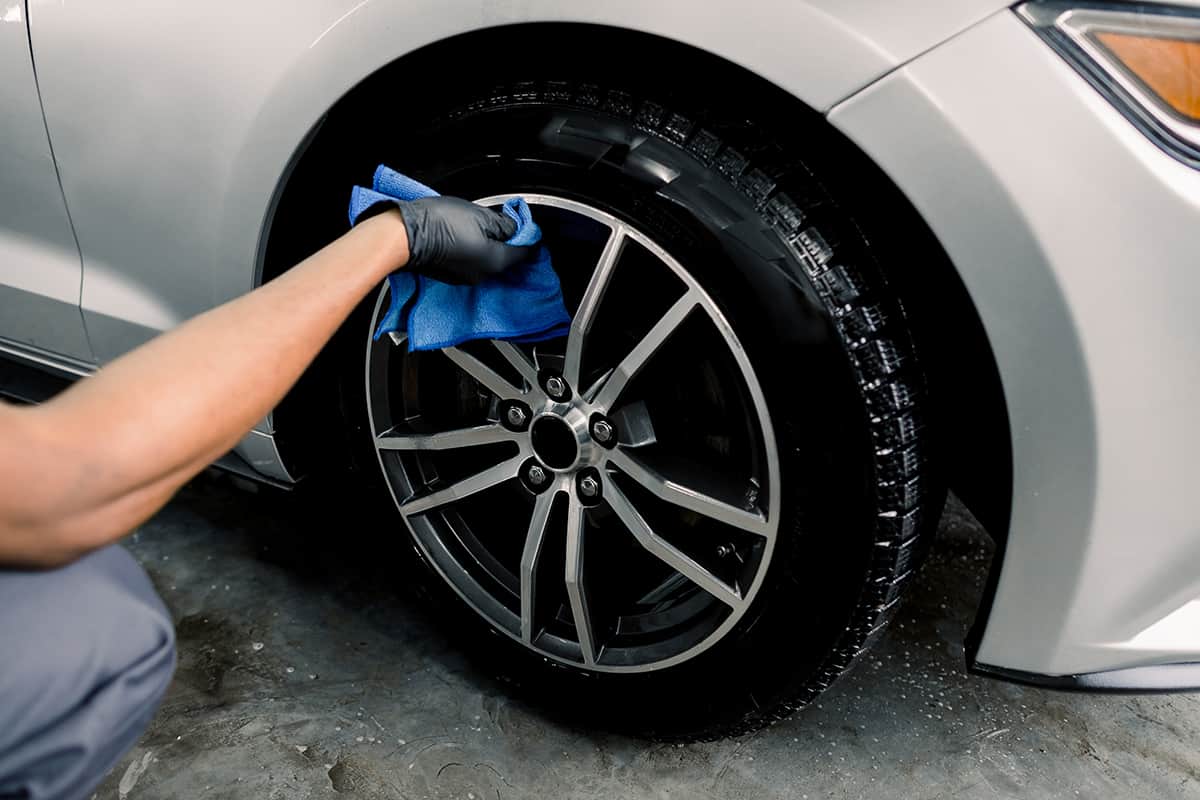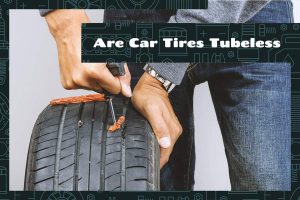Rims are designed to be tough enough to withstand all sorts of punishment on the road. However, if you’re not careful driving, you could end up cracking your rims, which can lead to air escaping the tires.
When a cracked rim leaks air, your tire loses pressure. This can result in shaky driving, reduced fuel efficiency, and even tire blowouts. To fix the issue, you can either repair the rim or replace it, depending on the severity of the crack.
This guide covers everything about why rims crack in the first place to repair and replacement options.
Why Do Rims Crack?

Rims can crack for a wide variety of reasons, many of which are completely under your control.
1. Road Conditions
Potholes, curbs, and uneven road surfaces can all lead to impacts strong enough to crack a rim. Even minor cracks can become more severe over time, especially if you continue to drive on challenging terrains.
2. Driving Habits
Aggressive driving, such as rapid acceleration and hard braking, can put extra stress on the rims. Frequent sharp turns at high speeds may also weaken the rims over time, making them more susceptible to cracking.
3. Poor Material Quality
Aluminum alloy rims are common but are more susceptible to cracks compared to steel rims. Aluminum is lighter, which can offer better performance, but the material is not as resilient as steel when exposed to harsh conditions or impact. Cheap or counterfeit rims, often found at lower price points, are even more prone to cracking.
What Happens When Cracked Rims Lead to Leaking Air?
When a rim has a significant crack, it’s not uncommon for the tire to start leaking air. As the air escapes, your car’s tire pressure drops, which has several consequences.
First, you’ll notice a decline in fuel efficiency because a tire with low pressure has increased rolling resistance, requiring more energy to move.
Second, your car’s handling will be compromised. You may experience vibrations or a less responsive steering system.
Finally, driving with a low-pressure tire significantly increases the risk of a tire blowout, a dangerous situation that can result in loss of vehicle control.
DIY Fixes for Minor Cracks

Fixing a minor crack in your car’s rim yourself can be a cost-effective way to address the issue, especially if the damage is not severe.
Preliminary Assessment
Before jumping into any repair, properly assess the extent of the damage. Use a cleaning solution to remove dirt and grime around the crack. A closer inspection will help you determine if the crack is superficial or if it penetrates deeper into the rim.
Superficial cracks are generally easier to manage at home. However, if you notice that the crack is more than a hairline fracture, consult a professional.
Sealants and Their Efficacy
Automotive sealants are available that can temporarily fix minor cracks in your rim. These sealants form a bond with the metal to seal the crack, possibly preventing air loss from the tire. Make sure to read the product instructions and compatibility information carefully before application.
However, the efficacy of these sealants is often short-lived. They can be a quick fix when you need to get your car to a repair shop but aren’t a permanent solution.
Welding
Welding is another DIY approach to repair a cracked rim. With the right equipment, welding can provide a more permanent solution compared to sealants. Here’s what you need to consider:
- Equipment: You’ll need a MIG or TIG welder, suitable filler material, and safety gear.
- Skill Level: Welding is not for beginners. If you’re not experienced, the risk of doing further damage is high.
- Cost: The initial investment in equipment can be substantial if you don’t already have a welding setup.
Epoxy Resin for Minor Cracks
This method is easier than welding and can be done with minimal equipment. However, like sealants, epoxy resin isn’t a long-term solution.
The advantage of epoxy is that it forms a stronger bond than regular sealants and can hold up longer. Remember to allow adequate curing time as indicated in the product specifications.
Professional Repair Options
When you’re dealing with cracked rims, especially those that are leaking air, professional repair services often offer the most reliable and long-lasting solutions.
Rim Straightening
Rim straightening is a service that’s aimed at fixing bends and minor deformations on your rim. It’s often the first step professionals take before addressing cracks. This method uses hydraulic machines to reshape the metal. It’s a popular option for rims with minor issues, but if your rim has a significant crack, additional repairs will be needed.
Welding Repairs
Unlike DIY welding, professionals have the experience and high-quality equipment to perform the job with precision. The advantage of professional welding is that the repair is usually stronger and more reliable. The repair shop will also test the rim after the weld to make sure it meets safety standards.
Reconditioning and Refinishing
If your rim is old or has aesthetic issues in addition to cracks, you may opt for reconditioning and refinishing. This often involves straightening, welding, and polishing or painting the rim. This is more of an all-encompassing service that not only addresses cracks but also improves the rim’s appearance.
Full Rim Replacement
Sometimes, repairing a cracked rim is impossible due to the extent of the damage or the type of material. In such cases, a full rim replacement is recommended. While this is the costliest option, it ensures you’re getting a rim that’s free from defects.
How to Prevent Future Rim Cracks

No one wants to deal with the hassle and expense of a cracked rim. While some incidents are unavoidable, there are proactive steps you can take to minimize the risk of future rim cracks.
1. Proper Tire Inflation
Overinflated tires put extra pressure on the rims, while underinflated tires can cause the rim to impact road hazards more directly. Check your tire pressure regularly and adjust as needed, especially when temperatures fluctuate. Your car’s Tire Pressure Monitoring System (TPMS) will let you know whether any of your tires are dangerously under or overinflated.
2. Avoid Potholes and Rough Roads
Rough roads and potholes are among the main culprits when it comes to cracked rims. Whenever possible, avoid driving on uneven or damaged road surfaces. If you can’t steer around a pothole, slow down before you hit it to minimize the impact on your rims.
3. Quality Tires Matter
High-quality tires often come with reinforced sidewalls that provide an extra layer of protection against rim damage. Even if they’re a bit pricier, they can save you money in the long run by reducing the chances of rim cracks.
4. Correct Loading
Excessive load on your vehicle can also lead to rim cracks. Always adhere to your vehicle’s load limit, which can usually be found in the owner’s manual. Distribute the weight evenly to avoid putting undue stress on a single rim.
5. Wheel Alignment and Balancing
Misaligned wheels or wheels that are not balanced properly can also contribute to rim damage. These issues cause uneven wear on the tires and add stress to the rims. You should have your wheel alignment and balancing checked during your regular car maintenance visits.
Seasonal Tire Swapping
In areas with severe weather changes, consider swapping out your regular tires for season-specific ones. Winter tires for snowy seasons or all-terrain tires for off-road adventures can better absorb impacts, offering additional protection to your rims.






